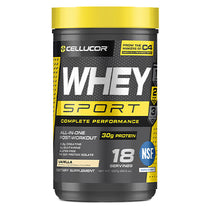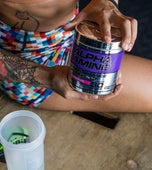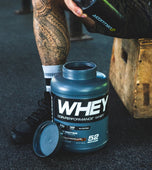Losing fat, a.k.a. "cutting," isn’t easy, and to make things even more complicated, there are about a thousand different fad diets all promising substantial weight loss in only a few days time. Most of these fad diets are glorified starvation diets wrapped in really attractive marketing.
That’s where we come in.
We’ve got two effective and widely used methods for cutting fat and helping you get ripped, ready, and rocking for the long haul.
How to Lose Fat Method #1 – Set Meal Plans
In the days before MyFitnessPal, smartphones, tablets, and the internet, people looking to cut fat and get in shape sought out a personal trainer and got a total body plan for diets and workouts. Every last detail was laid out, including how much food to eat and at what times you should be eating those foods.
This regimented approach to fat loss nutrition has worked for plenty of individuals wanting to shed fat. No one can question its effectiveness, but it does come with pros and cons.
Pros
Having a set meal plan developed by a specialist takes out all of the stress and mental fatigue that can come with trying to determine how to eat for fat loss. Simply follow the plan, eat “x” amount of food at each meal, and in a few weeks time, voila!
You’re slim, trim, and looking fine!
Pre-planned meals also help to eliminate wasted food or the temptation to snack. You only purchase a set number of foods at the store and that’s it. No mindless snacking, no frivolous impulse purchases, no wasted expense.
Cons
The downside to the set meal plan approach is that it can become incredibly boring after awhile. Typically, pre-set meal plans include a very limited number of foods that you eat day after day. What happens if you’re not in the mood for chicken and rice. Too bad, the meal plan says to eat it, and that’s all you know.
This leads to the larger problem with pre-set meal plans–they don’t actually teach you how to effectively set up a fat loss diet on your own. All it tells you is “eat this, not that.” What happens after you finish dieting and are ready to start eating “normally” again?
Well, you head back to your trainer and get a new meal plan for maintaining or bulking.
See the problem here?
You never really learn how to structure a sustainable and effective way of eating, which brings us to the next fat loss dieting approach...
How to Lose Fat Method #2 – Counting Macros
“Macros”, short for macronutrients, are the protein, carbohydrates, and fats present in the foods you eat every day. Each food contains a varying amount of each macronutrient, which determines how many calories it contains and how “good” the food is for your particular needs. All calories aren’t created equal.
16oz of soda has about as many calories as a 4oz piece of chicken breast, but the two contain dramatically different macronutrient profiles. The soda is pure sugar, while the chicken is 98% protein, with a smidge of fat.
When tracking macros for fat loss, it’s important to prioritize protein, which helps combat hunger and preserve muscle mass when eating at a caloric deficit. Following protein, you then set your fat macros for the day, and the rest of your calories are usually filled with carbohydrates. So, you’ll have target numbers of each macro that you need to consume each day.
Pros
When you take the counting macros approach to dieting, you’re free to eat whatever foods you want to hit your macronutrient goals for the day. This makes macro counting incredibly liberating and opens up a whole new world of foods you can consume to hit your goals. If you’re not in the mood for chicken and broccoli, you can have steak and asparagus, or yogurt and berries or anything else so long as you hit your set carbs, proteins, and fats for the day. This style of eating is also known as the if it fits your macros (IIFYM) approach to dieting.
Following IIFYM alleviates the boredom and mental drain that can come with abiding by a regimented meal plan all the time. If you’ve got room in your macros for a piece of chocolate or scoop of ice cream at the end of the day, feel free to enjoy without guilt. It may actually do some good too, by helping to alleviate the stress that comes with dieting.
But all isn’t perfect with the macro counting approach to fat loss.
Cons
A potential drawback to the macro counting, if it fits your macros lifestyle occurs when people take things to extremes, and adopt a diet of donuts, pizza, and twinkies. Sure, these foods could fit into anyone’s diet, but if you’re basing your food choices on calorically-dense, relatively nutrient-poor food selections, you’re going to have one heck of a hard time at hitting your target macro goals for the day.
Another drawback to the macro counting approach is that for some people it’s just too tedious. Not only do you have to weigh out all of your food (yes, down to the very last gram), you then have to track those foods with your smartphone or good ole’ pen and paper and see how many carbs, fats, and protein are in that food. Then, you need to figure out what kind of foods to eat for your next meal so you hit your macronutrient goals dead on at the end of the day.
See what we mean by tedious?
Now, tedious doesn’t mean it’s any worse or better than abiding by a prescribed meal plan, it’s just another way to help you get lean and mean. For some people counting macros isn’t bothersome, and a few actually enjoy it, for others, it’s too much minutiae to be dealing with in addition to all of the other stuff life throws at us on a daily basis.
The Takeaway
In the end, fat loss dieting is never easy but can be accomplished any number of ways, with two of the most popular options being the set meal plan route or macro tracking approach. Both are effective, but each comes with a set of potential downsides that you need to consider when deciding which way to go.
No matter which approach you take to dieting, one thing is certain, you'll need to work out too. When eating at a calorie deficit, there will be those times when energy and motivation to hit the gym are low.
To help fight the physical and mental fatigue that comes with busy schedules, hard workouts and the discipline required to reach your goals, grab one of the C4 formulas for energy, focus, and to help you power through those tough fat-loss workouts!
Then use an electrolyte drink mix like Alpha Amino during your workouts to ensure you stay hydrated, so you perform at your best!
And don’t forget to include COR-Performance Protein post-workout to support muscle growth and repair.











